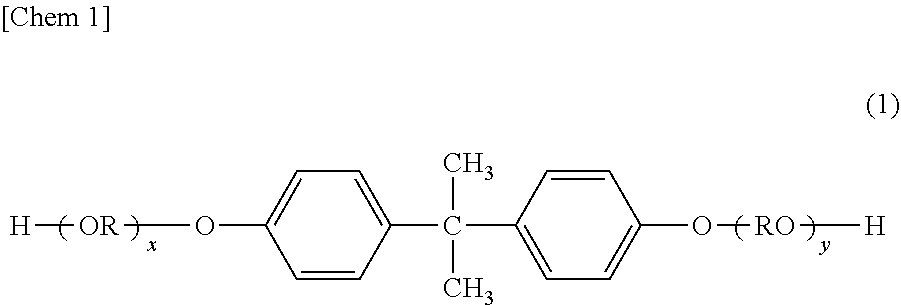Toner
a technology of toner and wax, applied in the field of toner, can solve the problems of increasing the number of prints, and increasing the number of demands for higher image quality, and achieving excellent endurance stability, excellent wax dispersibility, and excellent low-temperature fixability
- Summary
- Abstract
- Description
- Claims
- Application Information
AI Technical Summary
Benefits of technology
Problems solved by technology
Method used
Image
Examples
example 1
Toner No. 1 Production Example
[0186]
binder resin A-1:70 mass partsbinder resin B-1:30 mass partsFischer-Tropsch wax: 2 mass parts(Sasol Wax GmbH, C105, melting point = 105° C.)magnetic iron oxide particles a:90 mass parts(number-average particle diameter = 0.14 μm,Hc (coercive force) = 11.5 kA / m, σs (saturationmagnetization) = 90 Am2 / kg, σr (residualmagnetization) = 16 Am2 / kg)T-77 charge control agent: 2 mass parts
[0187](Hodogaya Chemical Co., Ltd.)
[0188]These starting materials were pre-mixed using a Henschel mixer followed by melt-kneading using a twin-screw kneading extruder. The residence time was controlled here so as to bring the temperature of the kneaded resin to 150° C. The resulting kneaded mass was cooled, coarsely pulverized with a hammer mill, and then pulverized using a Turbo Mill to obtain a finely pulverized powder. This finely pulverized powder was classified using a Coanda effect-based multi-grade classifier (Elbow Jet, Nittetsu Mining Co., Ltd.) to obtain toner pa...
examples 2 to 14
Toner Nos. 2 to 14 Production Examples
[0195]Toner Nos. 2 to 14 were prepared by proceeding as in Example 1, but changing the formulation as indicated in Table 3. These toner Nos. 2 to 14 were evaluated by the same methods as in Example 1. The results of the evaluations are given in Table 4.
[0196]The toners of Examples 2 and 3 gave the same evaluation results as for Example 1. It is thought here that a more preferred range for the melting point of the aliphatic compound for the binder resin B is at least 95° C. and not more than 110° C.
[0197]The toner in Example 4 received a fogging score of B. It is thought here that the lower melting point component of the wax did have some effect on the binder resin B since the melting point of the aliphatic compound for the binder resin B was 90° C.
[0198]The toner in Example 5 received a fogging score of B. It is thought here that there was some effect on the wax dispersibility since the melting point of the aliphatic compound for the binder resi...
PUM
| Property | Measurement | Unit |
|---|---|---|
| softening point | aaaaa | aaaaa |
| softening point | aaaaa | aaaaa |
| melting point | aaaaa | aaaaa |
Abstract
Description
Claims
Application Information
 Login to View More
Login to View More - R&D
- Intellectual Property
- Life Sciences
- Materials
- Tech Scout
- Unparalleled Data Quality
- Higher Quality Content
- 60% Fewer Hallucinations
Browse by: Latest US Patents, China's latest patents, Technical Efficacy Thesaurus, Application Domain, Technology Topic, Popular Technical Reports.
© 2025 PatSnap. All rights reserved.Legal|Privacy policy|Modern Slavery Act Transparency Statement|Sitemap|About US| Contact US: help@patsnap.com



